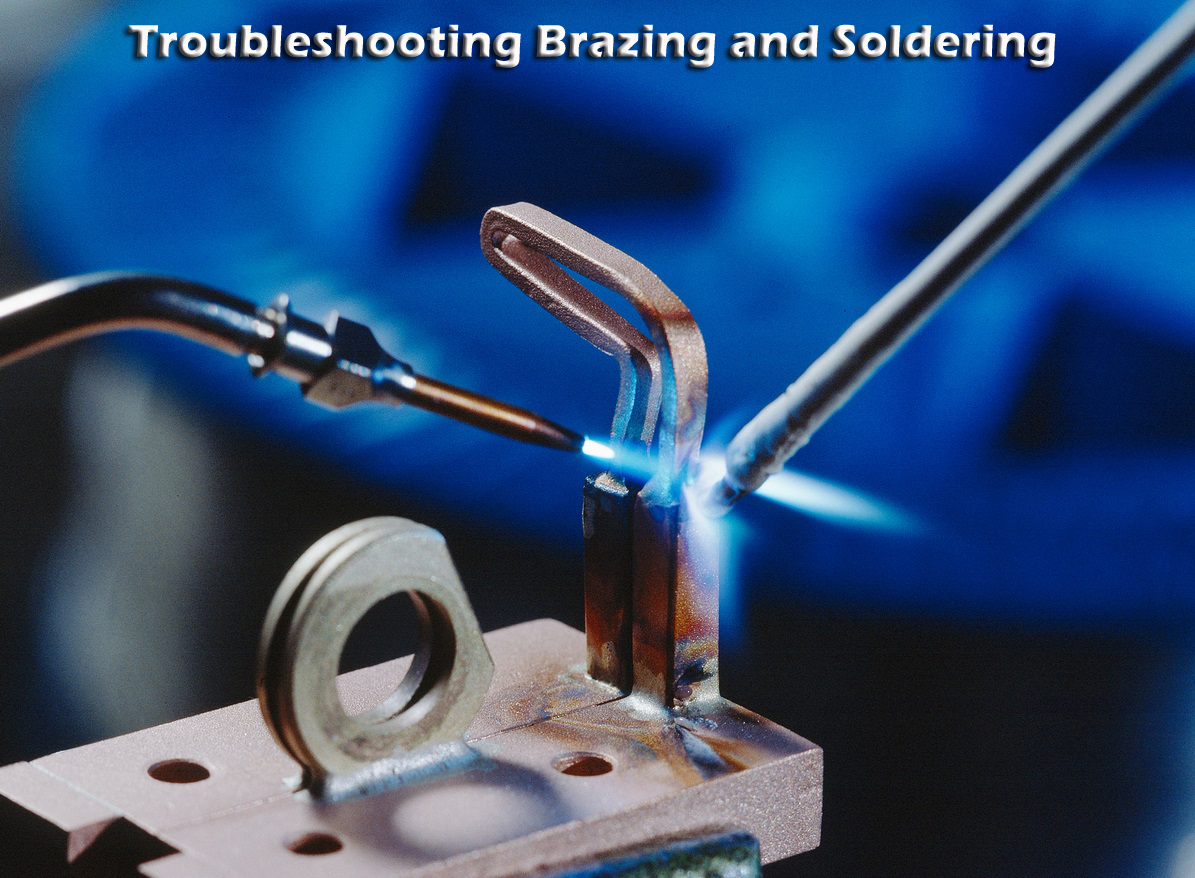
Troubleshooting Common Brazing Problems
Several courses, certifications, and training guides are available to optimize brazing and soldering. These skills and knowledge are considered essential. Still, mistakes are made. No industry professional is immune to error.
The intricacies of troubleshooting brazing and soldering must be understood. Issues are expected. They will occur. The key is early identification and correct resolution.
Troubleshooting Brazing – Common Issues and Solutions
Problem: Tip Keeps Falling Off/Breaking
Brazing tips that break or fall off repeatedly are commonly experienced, especially by those new to the trade. This issue is often frustrating. Costs and time can increase quickly.
When this occurs, troubleshooting brazing should be started by checking the braze alloy and ensuring the correct tip, material, and flux are used. Other possible causes include a joint that is too thin, poor placement, contamination, or improper heating.
Problem: Weak Braze Bonds
Brazing is a process where two or more metals are joined using melted filler metal. When done correctly, the result is a strong, durable bond. If weak bonds are present, several factors may be responsible.
Surfaces must be free of rust. Most brazing filler will not bond to rusted metal. Cleanliness is also required. Oil or grease in the joint will contaminate the area and weaken the bond.
Repair kits like Muggy Weld’s Super Alloy 5 are designed to assist. The included powder flux is formulated to remove oxidation and impurities when brazing aluminum with a torch.
Problem: Gas Entrapment
Gas entrapment, aka gas getting trapped in the metal during the bonding process, can significantly damage project results due to rising surfaces and bubbling. Gas entrapment can also cause weld metal porosity, which is known as a cavity-type defect formed by hydrogen, oxygen, nitrogen, or zinc fumes getting trapped during solidification.
For this one, there are a couple of different troubleshooting solutions that can help reduce or eliminate the gas entrapment risk. First, be sure that you are using the right flux. When flux heats up, it creates gas, and that gas needs to escape from the joint properly. The wrong flux can hinder that escape and keep the gas trapped inside. The next is ruling out over or underheating. Underheating and overheating a braze joint can cause the same type of gas/fume trapping effects as a wrong flux can.
Troubleshooting Soldering – Common Issues and Solutions
Problem: Disturbed Joint
In most cases, a disturbed joint results from movement that occurs (either mechanical or human-influenced) while the alloy itself is solidifying. The clear-cut sign this is happening is if your joint appears rough or frosted looking and perhaps features a ripple pattern on the joint surface.
To resolve this, all you will need to do is reheat the joint and allow it to cool down properly. Troubleshooting soldering more, you can stop this from happening again down the road by scoping out/rectifying any vibrational sources and being diligent in implementing proper stabilization protocols.
Problem: Not Enough Solder
Just as the name indicates, a solder-starved joint is when the joint does not have enough solder. This depleting error can ultimately weaken your joint and increase its risk of cracking and long-term reliability.
Luckily, troubleshooting solder-starved joints is as easy as reheating the joint and applying more solder until you see that the joint is strong. Some other considerations include examining the solderability of the component, testing the quality of the PCB pads, and soldering speed, and checking if the flux solids are good.
Problem: Undesirable Solder Appearances
If you have rigid, uneven, and rough outcomes, then this could very well be because of a cold solder joint. A cold solder joint is defined as a joint that did not melt entirely, which causes undesirable solder appearances. In addition, a cold solder joint can also be the catalyst for more detrimental damages in the future such as cracking. Keep in mind that low preheat can also cause other issues such as solder balls, bridging, and insufficient hole fills.
For this, all you will need to do is reheat the joint until the solder is properly flowing again. To prevent this from occurring again, be mindful that your solder iron is adequately preheated and operating using the appropriate power.
Still Stuck?
In summary, every welder has to incorporate troubleshooting brazing or troubleshooting soldering in their scope of work. This is a very typical factor that happens to even the most seasoned professionals. This very reality is why knowing the proper challenges and remediation steps right from the start will enable you to stay on track, reduce frustration, and simultaneously pave the way for a less error-prone future. However, if you are faced with a troubleshooting issue that is outside the norms listed above, don’t hesitate to reach out to the Muggy Weld team to gain more tailored support and recommendations.
